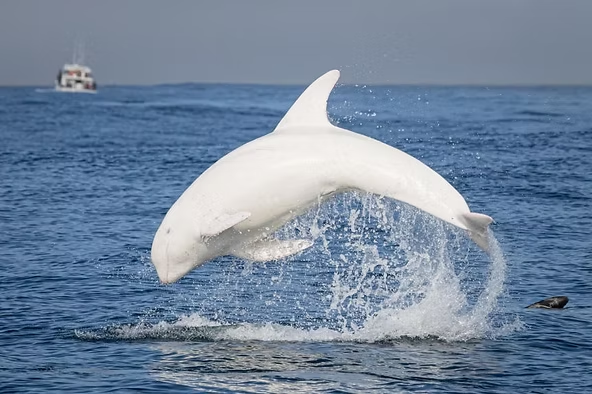Rare White Dolphin – ‘Casper’
Dolphins are among the most loved, intelligent, and mysterious marine animals. Their behaviors and social structures continue to intrigue scientists worldwide, and ongoing research seeks to uncover their secrets.
Where Was Casper Seen?
Monterey Bay has become the main hub for Casper, often spotted leaping and swimming in the area. Despite its rarity, Casper is not isolated and is frequently seen alongside its mother and other family members.
Marine biologists have observed Casper traveling with hundreds of other dolphins, demonstrating the species’ strong social bonds and cooperative nature.
What Makes Casper White?
Casper’s striking white color is caused by a genetic condition known as leucism. This condition suppresses melanin, the pigment responsible for normal skin coloration in dolphins. Reduced melanin levels result in Casper’s rare white appearance.
Some other dolphins with lower melanin levels develop pink spots on their bodies, but Casper remains unique in its entirely white coloration.
Using Casper as a Research Marker
Marine biologists often use Casper as a marker to track dolphin groups. By observing Casper, researchers can identify and monitor the same dolphin pod, making longitudinal studies easier and more accurate.
Casper’s uniqueness not only aids research but also highlights how even a rare genetic condition can provide valuable insights into marine life.
Conclusion
As of current studies, Casper is the only white dolphin observed. For those lucky enough to witness this extraordinary animal, it is a rare opportunity to appreciate nature’s marvels and capture unforgettable memories.

